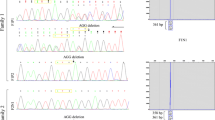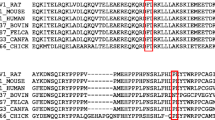Abstract
Periconceptional folate intake reduces both the occurrence and recurrence risk of neural tube defects. Plasma homocysteine levels can be elevated in mothers of a child with a neural tube defect, suggesting a dysfunctional folate metabolism. Very recently we showed that a common 677C→T mutation in the 5,10-methylene tetrahydrofolate reductase gene, causing thermolability of the enzyme, is a risk factor for spina bifida offspring. Restriction enzyme analysis of the genomic 5,10-methylene tetrahydrofolate reductase polymerase chain reaction fragment revealed a significantly higher prevalence of a +/+ genotype among spina bifida patients and their mothers. The risk for spina bifida offspring is the strongest if both the mother and her child have the mutation in the homozygous state. Enzymatic analysis showed that homozygosity for the 677C→T mutation causes a decreased 5,10-methylene tetrahydrofolate reductase activity, resulting in elevated plasma homocysteine and red blood cell folate levels and lowered plasma folate and cysteine values. This extended study demonstrates that a nucleotide substitution in the coding region of 5,10-methylene tetrahydrofolate reductase, resulting in reduced activity and an impaired homocysteine and folate metabolism, is a genetic risk factor for spina bifida.
Similar content being viewed by others
Explore related subjects
Discover the latest articles and news from researchers in related subjects, suggested using machine learning.Author information
Authors and Affiliations
Additional information
Received: 24 May 1996 / Accepted: 14 August 1996
Rights and permissions
About this article
Cite this article
van der Put, N., van den Heuvel, L., Steegers-Theunissen, R. et al. Decreased methylene tetrahydrofolate reductase activity due to the 677C→T mutation in families with spina bifida offspring. J Mol Med 74, 691–694 (1996). https://doi.org/10.1007/s001090050073
Issue Date:
DOI: https://doi.org/10.1007/s001090050073




